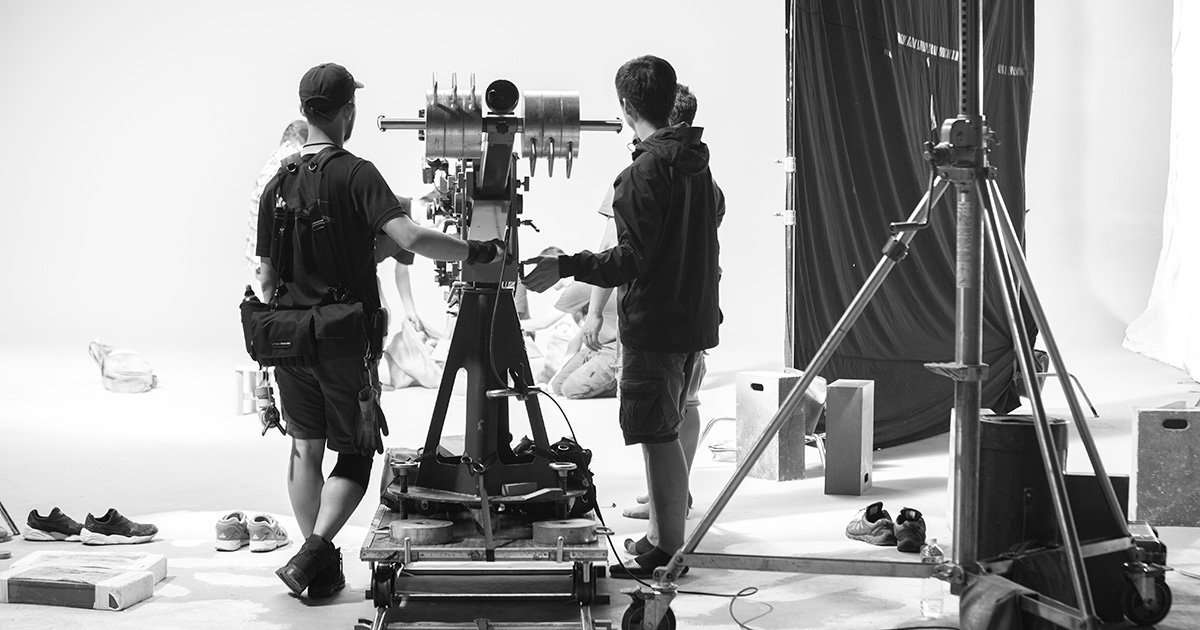Lights, camera, budget! If you’re a documentary filmmaker ready to embark on your next project, then mastering the art of budgeting is an essential skill that can make or break your production. While creativity and storytelling are at the heart of any documentary, it’s crucial to have a solid financial plan in place to ensure smooth sailing from start to finish. In this comprehensive guide, we’ll take you through the ins and outs of creating a documentary budget, provide tips for staying within your financial limits, highlight common pitfalls to avoid, and even share some creative ways to cut costs without sacrificing quality. So grab your notepad and get ready to dive into the world of documentary budgeting like a pro!
Understanding the Importance of Budgeting in Documentary Filmmaking
When it comes to documentary filmmaking, budgeting is not just a necessary evil – it’s an essential component that can make or break your project. Understanding the importance of budgeting is crucial for filmmakers who want to bring their creative vision to life while staying financially responsible.
First and foremost, creating a budget allows you to have a clear understanding of the resources you’ll need throughout the entire filmmaking process. From pre-production expenses such as research and location scouting, to production costs like equipment rentals and crew salaries, having a comprehensive breakdown of your financial needs will help you stay organized and ensure nothing falls through the cracks.
Budgeting also plays a vital role in managing expectations for all parties involved in your documentary project. Whether you’re seeking funding from investors or collaborating with sponsors, having a well-thought-out budget demonstrates professionalism and credibility. It shows potential partners that you are committed to delivering results within agreed-upon financial parameters.
Furthermore, developing a realistic documentary budget helps you identify areas where compromises may be necessary without sacrificing quality. By carefully allocating funds towards key elements like cinematography or post-production editing, you can prioritize what matters most for telling your story effectively on screen.
But certainly not least important – proper financial planning gives you peace of mind throughout the production process. When every dollar is accounted for and allocated appropriately, there’s less room for unexpected surprises or last-minute scrambling to find additional funds. This allows filmmakers like yourself to focus on what really matters: capturing compelling stories that resonate with audiences.
So remember – when it comes to documentary filmmaking, mastering the art of budgeting isn’t just about crunching numbers; it’s about laying down strong foundations that support your creative vision every step of the way
A Step-by-Step Guide to Creating a Documentary Budget
Budgeting is a crucial aspect of documentary filmmaking, as it allows you to plan and allocate your resources effectively. By following a step-by-step guide, you can create a comprehensive budget that covers all aspects of your project.
1. Start by outlining the scope of your documentary: Determine the length, style, and overall vision for your film. This will help you identify the key elements that need to be included in the budget.
2. Break down your expenses: Divide your budget into categories such as pre-production, production, post-production, marketing, and distribution. Within each category, list specific line items like crew salaries, equipment rental fees, travel expenses, editing costs, etc.
3. Research costs: Reach out to vendors and service providers to get accurate quotes for equipment rentals or post-production services. Don’t forget to account for contingencies or unexpected expenses.
4. Prioritize essential items: Identify the core elements necessary for telling your story effectively while keeping an eye on cost-efficiency. Allocate funds accordingly based on their importance.
5. Create a timeline: Map out the duration of each phase in your production process and assign appropriate budgets for each stage accordingly.
6.
Watch out for hidden costs: Consider additional expenses like insurance coverage or legal fees associated with copyright clearances or licensing agreements.
7.
Track actual versus projected expenditures throughout production to ensure accuracy in real-time data analysis.
By following these steps diligently when creating a documentary budget,you’ll have a solid foundation from which to manage finances efficiently during every stage of filmmaking!
Tips for Staying Within Your Budget
When it comes to documentary filmmaking, budgeting plays a crucial role in determining the success of your project. Staying within your budget is essential to ensure that you can bring your vision to life without running into financial constraints. Here are some tips to help you stay on track with your documentary budget.
First and foremost, create a detailed budget plan before you start shooting. This will give you a clear overview of all the expenses involved in the production process. Include everything from equipment rentals and crew salaries to travel costs and post-production expenses.
Next, prioritize your spending based on what is truly necessary for telling your story effectively. Determine which elements are essential and which ones can be adjusted or removed if needed. By focusing on what is essential, you can allocate your resources more efficiently.
Another important tip is to negotiate discounts whenever possible. Reach out to suppliers, vendors, and service providers and explain that you are working on a documentary project with limited funds. Many may be willing to offer discounted rates or special arrangements based on the unique nature of your project.
Additionally, consider utilizing existing resources or finding creative alternatives instead of purchasing new equipment or props. Borrowing equipment from friends or collaborating with other filmmakers who already have certain items can save you significant amounts of money.
Furthermore, keep track of every expense throughout the production process by maintaining organized records and receipts. This will help you identify any areas where costs could be reduced or reallocated as needed.
Always leave room for unexpected expenses in your budget plan as they are bound to arise during filming and post-production stages. Having a contingency fund will prevent these surprises from derailing your entire project financially.
By implementing these tips for staying within your budget during documentary filmmaking, you’ll have a better chance at completing an impactful film while keeping financial stress at bay! Now let’s dive into some common mistakes filmmakers should avoid when creating their documentary budgets…
Common Mistakes to Avoid When Budgeting for a Documentary
Common Mistakes to Avoid When Budgeting for a Documentary
1. Underestimating Expenses: One of the most common mistakes filmmakers make when budgeting for a documentary is underestimating expenses. It’s crucial to thoroughly research and account for all costs, including equipment rentals, travel expenses, insurance fees, post-production costs, and marketing expenses.
2. Neglecting Contingency Funds: Another mistake is not setting aside enough funds for unexpected expenses that may arise during production. It’s essential to have a contingency fund in place to cover any unforeseen circumstances or additional needs that may arise throughout the filmmaking process.
3. Failing to Allocate Resources Properly: Poor resource allocation can lead to overspending or inadequate funding in critical areas of your documentary project. It’s important to allocate resources based on priorities and give each aspect of your film the attention it deserves.
4. Overlooking Legal and Licensing Costs: Many filmmakers overlook legal fees associated with acquiring necessary licenses, rights clearances, music royalties, and releases from individuals appearing in their documentary. Failure to factor these costs into your budget can result in legal issues down the line.
5. Ignoring Post-Production Expenses: Don’t forget about post-production costs when creating your budget! These include editing fees, color grading services, sound mixing and design fees, as well as film festival submission fees if you plan on showcasing your documentary at festivals.
6. Not Considering Outreach and Distribution Costs: Often overlooked are the costs associated with promoting and distributing your finished documentary after completion. This includes creating promotional materials such as posters or trailers and investing in marketing efforts like film festival submissions or distribution platforms.
Avoiding these common mistakes will help you create a realistic budget that covers all aspects of producing your documentary while minimizing financial surprises along the way
Creative Ways to Cut Costs Without Sacrificing Quality
When it comes to documentary filmmaking, cutting costs without sacrificing quality can be a daunting task. However, with some creative thinking and resourcefulness, it is possible to stay within your budget while still delivering a high-quality final product.
One effective strategy is to tap into the power of collaboration. Reach out to local artists, musicians, or other creatives who may be willing to contribute their talents in exchange for exposure or credits in your film. This not only adds value to your project but also helps build relationships within the artistic community.
Another way to save money is by utilizing existing resources. Instead of renting expensive equipment, consider borrowing or leasing from friends or colleagues who may have what you need. Additionally, scout locations that are easily accessible and require minimal set dressing or alterations.
Furthermore, careful planning can go a long way in cost-cutting efforts. Map out your shooting schedule strategically so that you can maximize each location and minimize travel expenses. Utilize natural lighting whenever possible rather than relying on costly artificial setups.
In addition, think outside the box when it comes to post-production tasks such as editing and sound design. Consider reaching out to film schools or freelance professionals who may offer their services at a lower cost compared to established studios.
Embrace the power of social media marketing. Leverage platforms like Facebook and Instagram not only for promotion but also as avenues for crowdfunding campaigns or sponsorships from interested parties.
By implementing these creative strategies without compromising quality standards,
documentary filmmakers can successfully navigate budget limitations while producing compelling narratives that resonate with audiences around the world.
Securing Funding for Your Documentary Project
Securing Funding for Your Documentary Project
When it comes to documentary filmmaking, securing funding is often one of the biggest challenges that filmmakers face. Without adequate funds, it can be difficult to bring your vision to life and tell the stories that matter. However, with the right approach and strategy, you can increase your chances of securing funding for your documentary project.
One of the first steps in securing funding is to research potential sources. This could include grants from foundations or government organizations that support documentary filmmaking, as well as crowdfunding platforms where you can engage directly with your audience and ask for their support.
Once you have identified potential funders, it’s important to prepare a compelling pitch. This should clearly outline why your documentary project is important and why it deserves financial support. Be sure to highlight any unique aspects or perspectives that make your film stand out from others in the genre.
In addition to a strong pitch, having a detailed budget plan is crucial when seeking funding. Funders want to see how their money will be used and what impact it will have on the final product. Break down all anticipated expenses, including production costs, equipment rentals or purchases, crew salaries, post-production fees, marketing expenses – everything necessary for bringing your vision into reality.
Networking also plays a key role in securing funding for documentaries. Attend industry events like film festivals or conferences where you can meet potential investors or sponsors who share an interest in supporting meaningful storytelling through documentaries.
Lastly but importantly keep in mind people tend to invest not only on projects they believe in but also on people they trust; so build relationships with funders by keeping them updated on progress during pre-production and production stages.
Securing funding for a documentary project may seem daunting at first but by taking these steps – conducting thorough research on potential funders; crafting a compelling pitch; creating a detailed budget plan; networking within the industry; building relationships based on trust – you’ll be better positioned to secure financial support for your documentary and bring your vision to the screen.
Conclusion
Conclusion
Mastering documentary budgeting is crucial for filmmakers who want to bring their vision to life while keeping financial constraints in check. By understanding the importance of budgeting, following a step-by-step guide, and avoiding common mistakes, you can ensure that your project stays on track.
Remember to stay organized throughout the process and keep detailed records of all expenses incurred. Regularly review your budget to make adjustments as necessary and be proactive in finding creative ways to cut costs without sacrificing quality.
Securing funding for your documentary project may require persistence and resourcefulness. Explore different avenues such as grants, crowdfunding platforms, sponsorships, or partnerships with organizations aligned with your film’s theme.
Creating a comprehensive and well-thought-out budget will not only help you manage funds effectively but also provide a roadmap for executing your vision successfully. With careful planning and attention to detail, you can navigate the financial aspects of documentary filmmaking with confidence.




